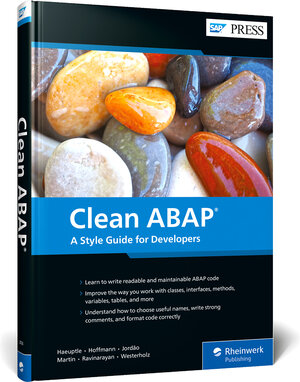
ABAP developers, are you looking to clean up your code? Then pick up this official companion to the Clean ABAP GitHub repository. This book is brimming with best practices, straight from the experts, to help you write effective ABAP code. Start by learning when to apply each clean ABAP practice. Then, dive into detailed code examples and explanations for using classes, methods, names, variables, internal tables, and more. From writing code to troubleshooting and testing, this is your complete style guide!
In this book, you’ll learn about:
a. Clean ABAP Concepts
What is clean ABAP and why is it important to write clean code? Understand clean ABAP concepts with insight from the experts, including special considerations for legacy code and performance.
b. Best Practices
Walk through the what, why, and how behind clean ABAP best practices. Learn to improve your code, including using classes and interfaces appropriately, handling method design and control flow, designing and running unit tests, and much more.
c. Practical Examples
See clean ABAP practices in action! Improve your understanding of how to write effective code. Use detailed examples for each best practice that demonstrate the difference between clean and messy code.
Highlights include:
1) Classes and interfaces
2) Methods
3) Names
4) Variables and literals
5) Internal tables
6) Control flow
7) Comments
8) Formatting
9) Error handling
10) Unit testing
11) Packages


